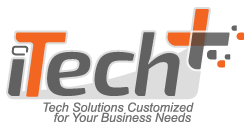What is Infrastructure as a Service (IaaS) and How Does it Work?
Infrastructure as a Service (IaaS) is a cloud computing model that provides users with access to computing resources such as servers, storage, and networking. It is a form of virtualization that allows users to access and manage these resources without having to purchase, install, and maintain the physical hardware.
IaaS works by providing users with a virtualized environment in which they can access and manage their computing resources. This environment is hosted on a cloud provider’s servers, which are located in a remote data center. The cloud provider is responsible for managing the physical hardware, while the user is responsible for managing the virtualized environment.
The user can access the virtualized environment through a web-based interface or an API. This interface allows the user to create and manage virtual machines, storage, and networking resources. The user can also configure the environment to meet their specific needs.
Once the user has configured the environment, they can deploy applications and services on the virtual machines. The cloud provider is responsible for managing the underlying infrastructure, such as the physical hardware, networking, and storage.
IaaS provides users with a cost-effective way to access and manage their computing resources. It eliminates the need to purchase, install, and maintain physical hardware, which can be expensive and time-consuming. Additionally, IaaS allows users to scale their computing resources quickly and easily, as they can add or remove resources as needed.
Exploring the Benefits of IaaS for Businesses
The cloud computing industry has seen tremendous growth in recent years, with Infrastructure as a Service (IaaS) becoming an increasingly popular option for businesses. IaaS is a cloud computing model that provides users with access to virtualized computing resources such as servers, storage, and networking. This model offers a number of benefits for businesses, making it an attractive option for many organizations.
One of the primary advantages of IaaS is its scalability. With IaaS, businesses can quickly and easily scale up or down their computing resources as needed. This allows businesses to respond quickly to changing demands and to ensure that they have the resources they need to meet their goals. Additionally, IaaS can help businesses save money by allowing them to pay only for the resources they need, when they need them.
Another benefit of IaaS is its flexibility. With IaaS, businesses can quickly and easily deploy new applications and services without having to purchase and maintain their own hardware. This allows businesses to quickly adapt to changing market conditions and to take advantage of new opportunities. Additionally, IaaS can help businesses reduce their IT costs by eliminating the need to purchase and maintain their own hardware.
Finally, IaaS can help businesses improve their security. With IaaS, businesses can take advantage of advanced security features such as encryption, authentication, and access control. This can help businesses protect their data and ensure that it is secure from unauthorized access. Additionally, IaaS can help businesses reduce their risk of data loss by providing them with reliable backups and disaster recovery solutions.
Overall, IaaS offers a number of benefits for businesses. It can help businesses save money, improve their security, and quickly and easily deploy new applications and services. For these reasons, IaaS is an attractive option for many organizations.
Understanding the Security Implications of IaaS Cloud Computing
IaaS (Infrastructure as a Service) cloud computing is a type of cloud computing that provides virtualized computing resources over the internet. It is a cost-effective way for businesses to access computing resources without having to purchase and maintain their own hardware. However, IaaS cloud computing also presents a number of security risks that must be addressed.
One of the primary security risks associated with IaaS cloud computing is the potential for data breaches. As data is stored in the cloud, it is vulnerable to unauthorized access. To mitigate this risk, organizations should ensure that their cloud provider has strong security measures in place, such as encryption and authentication protocols. Additionally, organizations should ensure that their own security measures, such as firewalls and antivirus software, are up to date.
Malicious Attacks
Another security risk associated with IaaS cloud computing is the potential for malicious attacks. As cloud computing resources are shared among multiple users, malicious actors may be able to access and exploit vulnerable systems. To protect against this risk, organizations should ensure that their cloud provider has robust security measures in place, such as intrusion detection systems and regular security audits. Additionally, organizations should ensure that their own systems are regularly updated and patched to protect against the latest threats.
Finally, organizations should be aware of the potential for insider threats. As cloud computing resources are shared among multiple users, malicious actors may be able to access and exploit vulnerable systems. To protect against this risk, organizations should ensure that their cloud provider has robust access control measures in place. Such as multi-factor authentication and role-based access control. Additionally, organizations should ensure that their own systems are regularly monitored for suspicious activity.
In conclusion, IaaS cloud computing can provide organizations with a cost-effective way to access computing resources. However, organizations must be aware of the potential security risks associated with IaaS cloud computing. By ensuring that their cloud provider has strong security measures in place, regularly updating their own systems, and monitoring for suspicious activity, organizations can ensure that their data remains secure.


Add a Comment